Smart Grid and Renewable Energy
Vol.2 No.3(2011), Article ID:6563,14 pages DOI:10.4236/sgre.2011.23025
Analysis of Distributed Generation Systems, Smart Grid Technologies and Future Motivators Influencing Change in the Electricity Sector
![]()
School of Engineering and Science, Victoria University, Melbourne, Australia.
Email: nurasyik.hidayatullah@live.vu.edu.au; blagojce.stojcevski@vu.edu.au; akhtar.kalam@vu.edu.au
Received March 9, 2011; revised June 30, 2011; accepted July 6, 2011.
Keywords: Climate Change, Distributed Generation, Electricity Sector, Smart Grid
ABSTRACT
The global Electricity Sector and its customers are faced with a number of challenges that are unparalleled since the advent of widespread electrification. Challenges including climate change, escalating energy prices, energy security and energy efficiency are converging to drive fundamental change in the way energy is produced, delivered and utilized. The electricity system of the future must produce and distribute electricity that is reliable, affordable and clean. To accomplish these goals, both the electricity grid and the existing regulatory system must be smarter. This paper explores smart grid technologies, distributed generation systems, R&D efforts across Europe and the United States, and technical, economical and regulatory barriers facing modern utilities.
1. Introduction
The Electricity Sector for the greater part of the 20th century, and yet into the beginning of the 21st century, has relied upon the mainstream of its electricity being produced by strongly built centralized power stations that are connected to an abundance of unified transmission networks [1]. Regardless, crucial developments during the course of the next 10 - 15 years in terms of the innovation of the Electricity Sector from a centralized to decentralized power systems, architecture is a major priority for all governments and industry leaders in both developed and developing countries alike. This impetus has gained overwhelming momentum through constant bombardment of media personnel on intricate issues related to climate change, escalating energy prices, energy security and energy efficiency.
Moreover, changes in the Electricity Sector must also concentrate towards capitalizing on intelligent electronic infrastructures, international standards and decentralized substation automation initiatives in order to reach a robust and capable smart grid future. Smart grid technologies are capable of rapidly detecting, analyzing and responding to various perturbations in the network by integrating advanced control methods and Flexible AC Transmission Systems (FACTS). This paper aims to provide a state-of-the-art analysis of the principal issues that influence future change in the Electricity Sector; engineering challenges associated with the coordination and integration of smart grid technologies; and an illustrative view of distributed generation.
2. Principle Factors Influencing Change in the Electricity Sector
This section of the paper intends to highlight some of the key issues influencing the Electricity Sector both at present and in the foreseeable future. Although many of these issues are interconnected in some form or other, they are intentionally discussed separately in order to establish a better insight into the influences each individual concern has on the electricity market.
2.1. Climate Change
The threat of climate change both in Australia and abroad is the main contributing factor prompting change in the Electricity Sector. The Intergovernmental Panel on Climate Change (IPCC) classifies climate change as the variation in the global atmospheric properties, either directly or indirectly caused by anthropogenic influences [2]. Systematic efforts executed through statistical analysis, R&D efforts and financial support is essential to establish new and innovative methods to reduce greenhouse gas emissions. If such mitigation actions are not taken seriously, then price wars instigated by the scarcity of fossil fuels, oil and gas resources will become apparent [2].
Problematic still is the economic limit imposed by the accessibility of fossil fuels and their extraction from diminishing locations. Plenty of debate on whether or not the delay of fossil fuel supplies will lead to reduced greenhouse gas emissions in the near future is a hot topic given that supplies are believed to run out in 35 - 40 years [3]. Consequently, dependable mitigation efforts must be contemplated to offer the world economy prospects in better improving the economic limit of fossil fuel accessibility, without increasing the goods and service standard of society.
However, climate change mitigation is still opposed by many factions around the world due to risks and uncertainties connected to the mitigation issue. When climate change initially emerged as a global phenomenon there was relentless cynicism that the scientific evidence provided by academics and scholars was inconsistent [4]. These outlooks were principally based on the assumption that most of the proxy data indicators analyzed by climatologists, geologists and paleontologists over the past 300 or so years could not be relied upon [4].
In spite of this, continuous monitoring of weather patterns and visible confirmation of worldwide disasters has opposed much skepticism on the issue. Events such as bushfires, coral bleaching, drought, floods, ice sheet melt, increased cyclone activity, ocean rises, species extinction and temperature variations all give substance to climate change [2]. Figure 1, illustrates fluctuating temperature variations of the Earth since 1900. The graph clearly indicates that from about 1970, the air temperature intensified to much hotter conditions by about 0.76˚C ± 0.19˚C [2].
Australia above all countries has committed itself to a pragmatic emissions target between 450 and 550 ppm CO2-e [2]. International frameworks such as the Bali
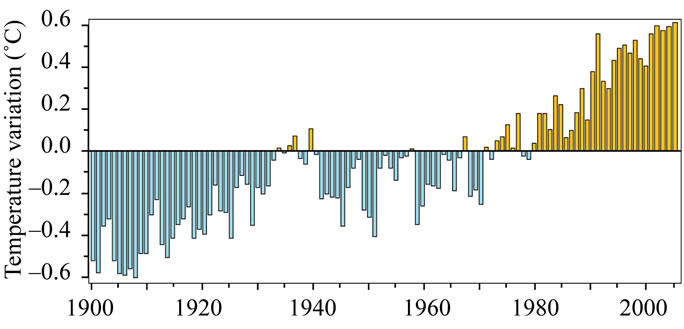
Figure 1. Annual temperature variation plot.
Roadmap, Kyoto Protocol and Copenhagen treaty play major roles within such trajectories and offer emission permits to nations that plummet beneath their targeted goals. These emission permits have quite a few benefits including lower abatement costs, unbiased trading coverage, enhanced financial security and improved profit enticements from trade earnings [2]. Conversely, they too have downfalls such as the loss of direction in mitigation policy attained from moving into international markets [2].
If no mitigation actions are taken to prevent the future state of climate change then society as we know it will definitely face grim circumstances. Emissions from toxic gases such as carbon dioxide (CH2), methane (CH4) and nitrous oxide (NO4) will continue to pollute the atmosphere at dangerously high levels. Statistical evidence already proves this point by acknowledging the fact that carbon dioxide has exceeded the natural range over the last two million years by 25%, methane by 120% and nitrous oxide by 9% [2].
2.2. Escalating Energy Prices
Energy prices since the turn of the millennium have increased drastically as a direct result of higher fossil fuel demand and constraints in production growth. Resources such as crude oil and natural gas have significantly soared in price, but coal in particular has skyrocketed in value due to restrictions in mining and transportation [2]. Figure 2, illustrates a graphical representation of the price discrepancies of the three mentioned resources (oil, natural gas and coal) from the period of 1986 to 2011. As evident from the plot, each resource considerably intensifies in cost from about the year 2000 onwards.
If energy prices continue to follow this suit, then countless number of fossil fuel consumers will be in search of new and innovative substitutes which can adequately fulfill their energy generation needs at lesser costs. These replacements will ultimately reduce carbon dioxide emissions, but will also genuinely tackle the issue

Figure 2. Energy price discrepancy plot.
of climate change. One possible substitute that may be used is that of hydrocarbons, which expand on the concept of mimicking artificial liquid and coal products [2].
However, for the time being it is expected that in the up-and-coming years coal prices will plummet to record lows due to noticeable links between reduced product growth and return on investment. Renewable energy technology initiatives will then become more reasonably priced and affordable. This comes with the opinion that high-carbon fuel technologies will continue to proliferate on account of elevated oil prices [5]. As for energy prices in general, they are believed to differentiate even more so into the future among people living in inner and outer suburbs [2].
In addition, the impacts of low-income households should also be considered. In most circumstances, poorer earning families will be reluctant to invest in more energy efficient technologies as they barely have enough income to support themselves. Even though they may be aware of the benefits such eco-friendly technologies provide (especially in terms of reduced energy bills), the option is just not viable for such individuals. Most of these families anyhow live in rental properties, thus implying they have no intention to install such energy saving luxuries unless the landlord decides to provide them out of their own pocket.
2.3. Energy Security
Ever since the aftermath of the September 11 attacks, energy security as a whole has become a major priority for the Electricity Sector. This comes amid concerns that a similar act of violence may well result in devastating effects within areas such as communication, electricity, gas or transportation [6]. This outcome considerably will slow down the global economy as a whole, but moreover impinge on the everyday processes of big business and society.
However, if such terrorization were to transpire on the Electricity Sector at this present time, it will not be through physical disruption or detonation of plant equipment. Instead the most likely cause of violation in terms of energy security will come from cyber threats that are brought upon by the encryption of communication systems within plant devices. This is to a great extent attributable to the vision that all power station equipment is coupled with some type of Intelligent Electronic Device (IED), SCADA system or IT infrastructure [6].
For this very reason, it is therefore imperative that power companies within the Electricity Sector invest both in time and resources by employing specialist engineers to continuously upgrade standards and procedures that may support the prevention of cyber security threats [6]. Companies should also ensure that fundamental precautions are fitted for the screening and education of staff members, but also make sure that auxiliary equipment is purchased in case of an emergency [6].
Similarly, wireless systems too face a risk of cyber intrusions. A large number of electricity companies make use of wireless systems in their networks as they believe features such as firewalls will protect their plant devices from prohibited users [6]. However, what many companies fail to recognize is that without the installation of extra security applications, the most amateur of hackers can access a company’s personal data in a number of minutes via the use of a laptop computer and downloadable software tools from the internet [6].
This reality for the most part is based on the notion that IED and SCADA systems when initially designed never took onboard the concept of security. At first engineers believed that such systems will be used alone and not with other devices within the network; and that only sanctioned personal will have the right of entry to valuable system data [6]. However, this was not so the case. Currently, SCADA systems transmit data by means of modems. These modems behave as an additional pathway for hackers to access confidential data given that each modem dials out a specific dialog, which if harnessed correctly can scrutinize system logins.
Even though modern encryption topologies can be used alongside SCADA systems to prevent hackers from entering unprotected modems, the difficulty of implementing such topologies within the existing centralized power systems architecture lies on the impression that newly developed standards must be formulated first and foremost. The development of these new standards will comprise of dedicated encryption devices inbuilt to the SCADA remote terminal units (RTUs), but also to the modems [6]. If a hacker then attempts to enter the network through these modems, any data being transmitted at that particular instant of time will be publicized in the form of an encrypted message.
Adhering to this pragmatism, the development of newly planned standards will without doubt bring about major setbacks to the Electricity Sector. Dilemmas associated with the implementation costs of these standards will be a major concern, seeing as funds from company shareholders are essential for future growth. A further setback is the development of a transition period where companies not presently using new standards are given the opportunity to transform their operations within a fixed time slot. In this means companies are allowed to continue their normal operations without punishment, until the fixed time slot is surpassed.
Company mergers too can result in setbacks within the Electricity Sector. For instance, if two companies were to merge into the one organization, they will have difficulties interfacing their previously used cyber security protocols into the new system. This will lead to all personnel (and not just the security manager) being informed about confidential errors occurring within the security infrastructure, meaning some employees might disclose sensitive information to market competitors [6].
In summary, as long as existing energy security standards do not attend to cyber security needs in areas such as home-to-grid or industrial-to-grid, it is important that smart grid technologies are made readily available by examining both common and domain-specific threats [1].
2.4. Energy Efficiency
The primary objective of any power network within the Electricity Sector is to produce reliable and stable energy to all paying customers without obstruction. Achieving such goals will require considerable amount of attentiveness, engineering effort and constant monitoring of fluctuating energy parameters. Even so, accomplishing 100% energy efficiency is still seen as close to impossible. This comes as the current centralized power systems architecture contains many technical, operational and economical limitations within its infrastructure.
On account of these limitations, the general public especially during summer periods witnesses numerous blackouts within their municipality. These blackouts are the most serious type of power outage and are triggered by numerous factors such as strong winds, flooding, fire, individuals leaving there air conditioners running for immense periods of time and even constant viewing of particular television events that occur randomly.
Because of these causes, engineers are required to anticipate the occurrence of such events and ensure that the base load is adjusted to cope with the peak in demand. This implies that a utility company must provide the least amount of electricity to its customers [2]. However, if the base load is not contemplated then a major blackout similar to that seen on August 14, 2003 which isolated the entire East Coast of the United States and Canada can be expected in the foreseeable future [2]. This disaster alone resulted in 50,000,000 customers losing power and leading to massive financial bearings [2].
Nevertheless, to tackle the issue of energy efficiency in the years to come it is fundamental that the current centralized power systems architecture be replaced by decentralized power systems architecture. This decentralized power systems architecture will have many advantages, one being that electricity can be accumulated via several storage devices located near the utility system or at an isolated site disconnected from the power grid [1].
This accumulated electricity will take immediate effect in multiple directions once a fault occurs, thus ensuring the event of a blackout will be unnoticed. Correspondingly, these storage devices will behave like a back-up generator where power is provided to the customer via renewable energy technologies and smart grid concepts. This benefit will allow engineers to repair the actual fault site without bringing about customer dissatisfaction.
3. Distributed Generation Systems
Distributed Generation is also referred to as “Decentralized Generation” in parts of Asia and Europe, “Embedded Generation” across the United States and “Dispersed Generation” in North America. The technology incorporates wind turbines, micro turbines, photovoltaic systems, fuel cells, energy storage and synchronous generator applications to supply active power to distributed systems connected close to the consumers load. This section of the paper provides a brief outline of general types of distributed generation technologies and key issues facing integration of the grid.
3.1. Wind Turbines
Wind power generation harnesses the energy of wind to drive electric power generators. This is achieved using some form of wind turbine which is operated either at variable or constant speed [7]. The advantage of using wind turbines compared to many other devices comes as there is no fuel charge, no pollution, potentially a 24 hour source of energy and units are modular with fairly linear power vs. cost relationship for large-scale installations. Disadvantages include high initial cost, unpredictability of energy production and greater environmental impacts compared to solar.
Horizontal-axis wind turbines have a “yaw control” which is a mechanism to keep them pointed into the wind. This is necessary in order to maintain power production and avoid operating problems such as resonance and vibration. If the wind turbine is designed with the rotor located behind the tower, yaw adjustment will occur automatically as the wind direction shifts. As for rotors located behind the tower they create difficulties of their own including vibration, uneven speed and loss of potential given that blades pass through the wind shadow.
On the other hand, vertical-axis wind turbines have several advantages over horizontal axis wind turbines. The majority of their mechanical and electrical machinery is located on the ground rather than 40 - 90 m in the air. This makes maintenance and operation simpler and reduces structural needs. Furthermore, vertical-axis wind turbines do not need a yaw control. Figure 3, illustrates a variable speed induction generator connected to a rectifier and inverter.
An additional method used to operate wind turbines is by connecting the stator directly to the AC grid and the rotor through power electronic devices. Figure 4, illustrates this scheme cited as a doubly feed variable speed induction generator (DFIG). The doubly feed induction generator is used considerably in new wind farm installations as it offers support in power system stability and reliability during peak load conditions.
3.2. Micro-Gas Turbines
Micro-gas turbines are simple, compact and robust devices used to turn electric generators in distributed generation systems. Most micro-gas turbines take their intake air through a recuperator which is a device that manages heat from the turbines exhaust to pre-heat the intake air, raising the turbines internal temperature [3]. The recuperator is a type of radiator or heat exchanger that transfers heat from the exhaust to the incoming air. Micro-gas turbine systems are equipped with air bearings to run at speeds between 50,000 - 90,000 rpm. These systems can be mass-produced at low cost in the range of 25 - 100 kW [3]. Figure 5, illustrates a micro-gas turbine system before injecting a voltage into the AC grid. The generated voltage must be rectified using a diode rectifier linked to an DC/AC inverter.
3.3. Photovoltaic
Photovoltaic systems convert solar energy into electric power using an array of solar cells. Solar cells are semiconductor devices that generate DC electric power at low voltages, typically less than 0.5 Volts. A single cell may be less than a square centimeter in size and produce only a small amount of power. For this reason, many cells are connected in series to produce higher voltages and in parallel to produce higher currents. To achieve Maximum Power Point Tracking (MPPT) using photovoltaic cells a DC/DC converter must be used at the output end of Figure 6. This will extract the maximum available power through a given insulation level, meaning the voltage level will be maintained as close as possible to the maximum power point [8]. PV systems do not have any moving parts therefore less maintenance is required.
3.4. Fuels Cells
Fuel cells convert chemical energy directly into electrical energy. All viable fuel cell technologies consume hydrogen and oxygen. The hydrogen is obtained from a fossil fuel and the oxygen from air. Inside the hydrogen the fuel cell is oxidized under monitored and controlled con-

Figure 3. Variable speed induction generator.
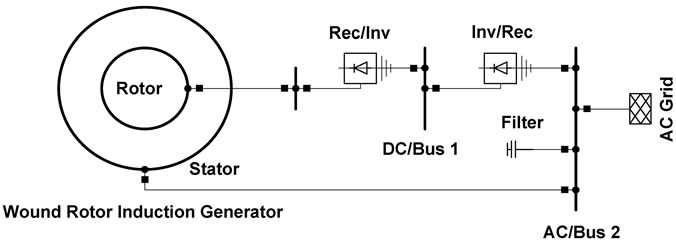
Figure 4. Double feed variable speed induction motor.

Figure 5. Micro turbine electrical system.
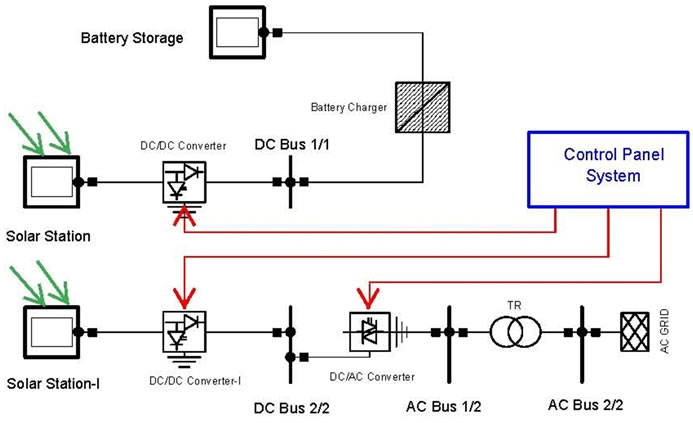
Figure 6. Photovoltaic system connected to a grid.
ditions, in the presence of a catalyst that combines the hydrogen and oxygen to produce water. Fuel cells offer a number of advantages over rotating fossil fuel generations in distributed generations including high efficiency, low pollution, very low noise, easily re-usable heat output and quick installation [3]. Despite these tremendous advantages fuel cells provide many drawbacks including high initial costs, maintenance skills required, fuel sensitivity and unproven track record. Five types of fuel cell types include proton exchange membrane fuel cells (PEMFC), alkaline fuel cells (AFC), phosphoric acid fuel cells (PAFC), molten carbonate fuel cells (MCFC) and solid oxide fuel cells (SOFC) [3]. Figure 7, illustrates the basic structure of a fuel cell.
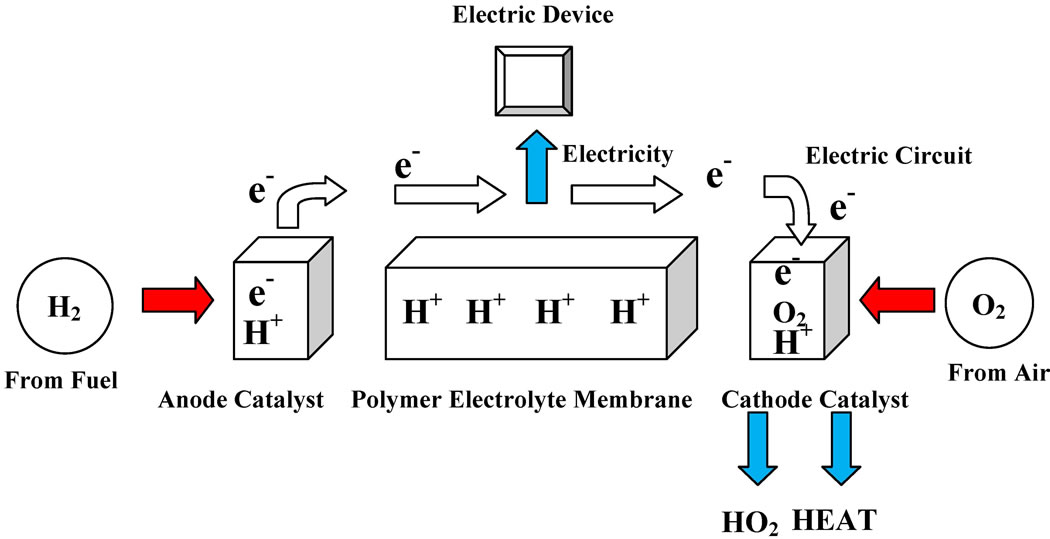
Figure 7. Fuel cell electrolyte membrane [9].
4. Distributed Generation Limits and Impacts
From a technical point of view, distributed generation systems have four limitations that must be acquired including the voltage angle (δ), voltage magnitude (V), real power (P) and reactive power (Q). These parameters can help determine the characteristics of both the PQ and PV bus. For example, in the PQ bus the voltage angle and voltage magnitude is unknown given that there is no power generation source. In the PV bus the reactive power and voltage angle are unknown, whereas the active power output and voltage magnitude are known. These buses are normally controlled by Auto Voltage Regulators (AVRs) which keep the voltage magnitude at a constant level by adjusting the field current and reactive power output. In addition, power quality also acts as a boundary given that it assists in the central generation process when overload transpires.
Despite the fact, distributed generation systems can have both positive and negative impacts on power system networks. At operational levels, impact evaluations can be analyzed through steady state analysis, dynamic analysis and protection practices [10]. Coupled distributed networks can improve system reliability, prevent under voltage drops, increase transient stability and maintain voltage levels during peak loads [11]. This occurs only if voltage levels are kept less than ±5% [12]. Conversely, negative impacts of distributed generation consist of short-circuiting behavior of components due to improper protection, anti-islanding and high fault currents [13].
5. Smart Grid Technologies
Smart Grid technologies are advanced electrical networks that support new generation interactive energy and communication services for the final customer. The electrical networks must be live, available, interconnected and coupled with real-time communications [14]. Smart grid technologies are the vision of the future delivering various benefits to society in order to accomplish sustainable energy development. The main advantage of smart grid implementation in terms of utility benefits include reduced perturbations and outages; minimal power losses and blackout prospects; lower maintenance and operational cost; lower greenhouse gas emissions; increased energy efficiency; increased large scale renewable energy and distributed generation integration; enabled micro-grid applications and Energy Management Systems (EMS); environmental benefits and economic growth through clean power markets. Similarly, the advantages of smart grid implementation in terms of customer benefits include enabled electricity consumption, enabled consumer services through distributed generation and cost savings through EMS. These benefits have a positive impact on society stimulating improvement in new power system networks as well as encouraging multiple engineers from pursuing research developments in smart grid technologies.
However, to achieve these benefits, the next generation power utility must co-exist with advanced grid devices and power electronic sensors. In the United State, more than half of the electricity produced is lost as a result of inefficiencies during power generation, transmission and distribution [15]. Nevertheless, smart grid technologies offer numerous characteristics to improve this state such as power quality enhancement, self-healing, generation sources, optimization of asset utilization and empowerment of users [14]. Figure 8, illustrates the architecture of an integrated smart grid communications platform.
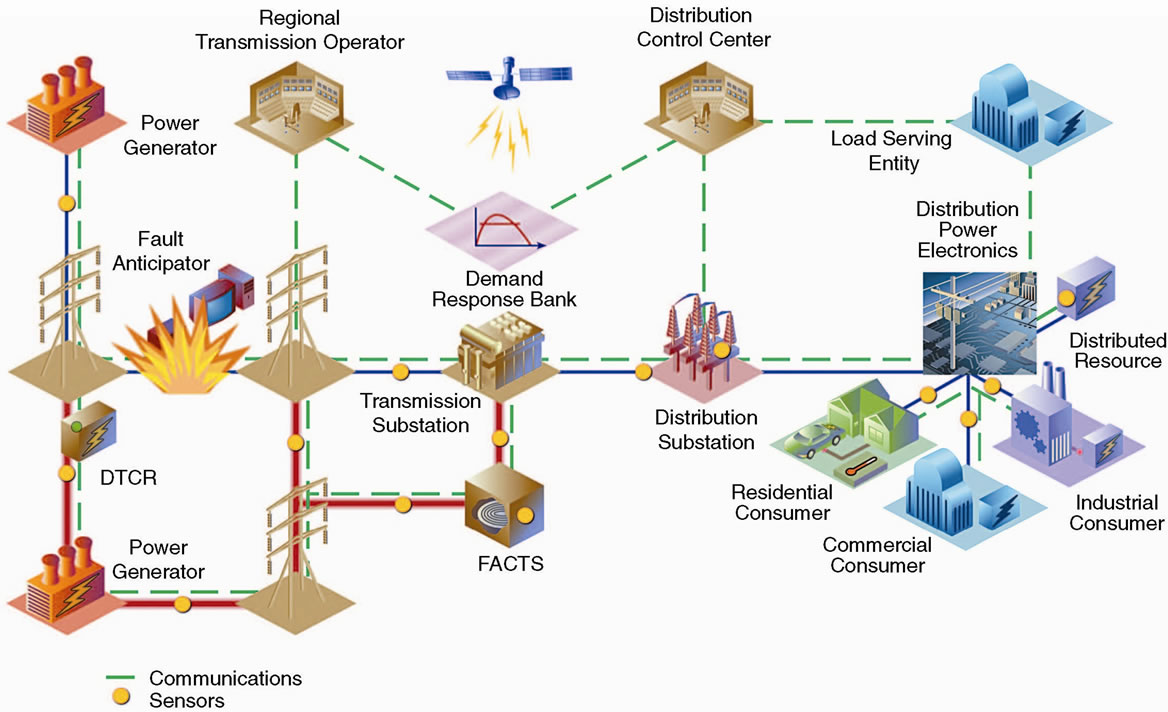
Figure 8. Architecture of integrated smart grid communications platform [16].
5.1. Continuing Research in the Field of Smart Grid Development
In the past decade, Smart Grid research has been driving developed countries to conduct more research, especially across the US and Europe. The US initially began this impetus through the Bush administration by investing resources and time to improve grid reliability, security and economics. During this period, the Department of Energy (DEO) acknowledged that the US economy lost several billions of dollars through power outages. For this reason, a policy for modernizing the national electricity was established in 2003 [17]. To achieve these goals, the American Recovery and Reinvestment Act (ARRA) introduced a $10 billion dollar investment in 2009 [18]. Several collaborative research programs were established on the basis of this incentive including the Grid Wise Alliance organization. The alliance works in coordination with the US Department of Energy and has programs on Smart Grid communication, architectures, standards, simulations, new regulations and market frameworks.
Other efforts in the US are undertaken by the Electric Power Research Institute (EPRI) through intelligent grid initiative projects [19]. EPRI deals with the technical frameworks and architectures of Smart Grid technologies by providing methods, tools and recommendations for standards to facilitate in the planning, specification and procuring of IT based systems such as advanced metering infrastructures, distributed automation, demand response management and wide-area measurement.
In contrast, the European platform on Smart Grid development aims to provide benefits for users, operators, and power companies across Europe. The platform began in 2005 and is expected to spend 750 billion Euros for improving power system infrastructures over the next 30 years. The European community has published a Strategic Research Agenda (SRA) which proposes a framework for future research themes and tasks [20]. The SRA aims to ensure that Europe’s electricity network is developed in a way that enhances Europe’s competitive position without damaging environmental objectives by delivering Catalyst Projects addressing potential barriers on technical standards. Europe intends to ensure electricity networks are [21]:
• Flexible—fulfilling customers needs whilst responding to changes and challenges ahead;
• Accessible—granting connection access to all network users, particularly for renewable power sources and high efficiency local generation with zero or low carbon emissions;
• Reliable—assuring and improving security and quality of supply, consistent with the demands of the digital age with resilience to hazards and uncertainties
• Economic—providing the best value through innovation, energy efficient management and “level playing field” competition and regulation.
5.2. Smart Grid Frameworks
The National Institute of Standards and Technology (NIST) [22], reveals that there are seven important Smart Grid areas that need to be addressed to make the grid “smarter”. These include bulk generation, transmission, distribution, customers, operation, markets and service providers. These seven areas employ many diverse elements such as Smart Meters, Advanced Metering Infrastructures (AMI), Data Management Systems, Two-way Communication Networks, FACTS, SCADA, Digital Sensing and Distributed Automation Systems. These sections will outline each area in order to appreciate smart grid implementation.
5.2.1. Bulk Generation
Figure 9 depicts a bulk generation site that generates power from renewable and non-renewable energy sources in bulk capacity. Bulk generation is the most crucial process used to communicate, share and exchange information with market domains. Typical applications include:
• Control—Managing system power flow and reliability such as using phase angle regulators;
• Measure—Providing data collection of system performances through SCADA;
• Protect—Maintaining high quality response to faults that might cause power disruption;
• Asset Management—Identify equipment due dates for maintenance, operational history and device life expectancy;
• Record—Records data for evaluation and forecast purposes.
5.2.2. Transmission
Figure 10, reveals a transmission network that delivers electrical power to distribution networks through long distance high voltage power lines and substations. These applications require real time control devices to record and optimize data through local or wide-area networks [22]. A typical example of a transmission network incorporating smart grid technologies is that of a Phasor Measurement Unit (PMU). These units are installed to facilitate in Regional Transmission Operations (RTO) and take control during fault disturbances [23]. Current research reveals that PMUs have been effectively proven to be used for smart grid islanding and anti-islanding to integrate distributed devices such as photovoltaic (PV) panels [24].
Another transmission network that can be used is FACTS based technology like STATCOM and SVC. This provides several possibilities to enhance power system performance, power quality and maintain voltage stability [25]. SVCs can be connected directly to the grid for dynamic voltage control without the need of a step down transformer [26].
5.2.3. Distribution
Figure 11, depicts a distribution network that delivers power from a bulk generation to the customer. Most distributed networks are radial and unidirectional (i.e. during a fault scenario the operator manually restores power to the customer). This under distributed generation will become a thing of the past particularly since electricity
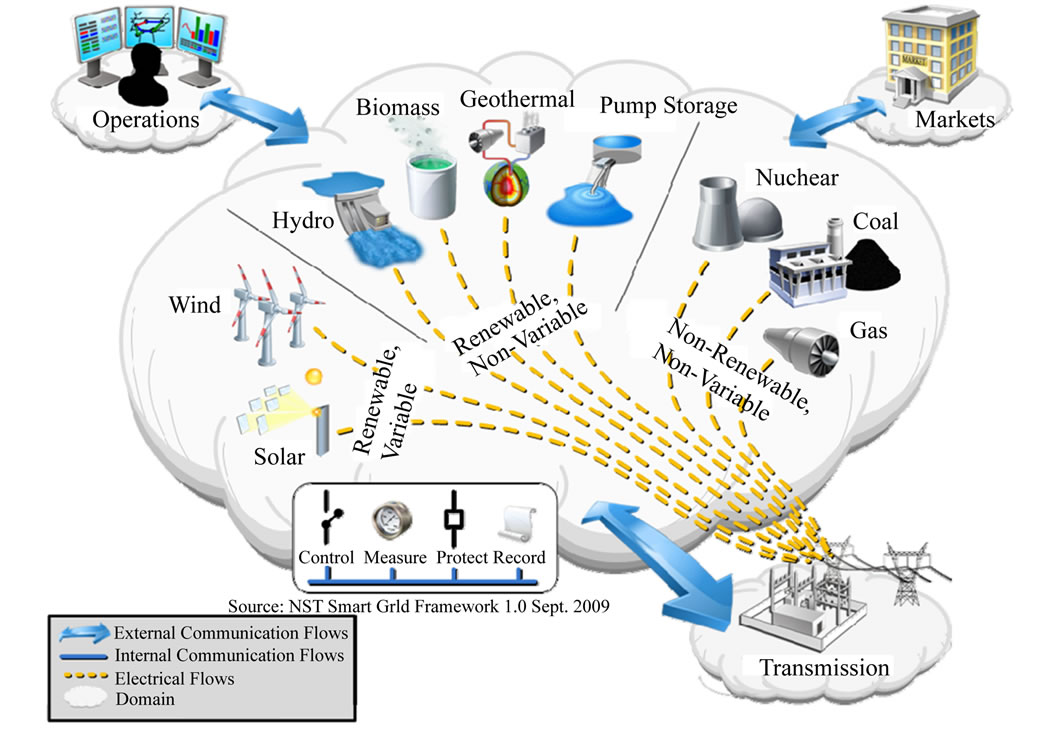
Figure 9. Bulk Generation [22].

Figure 10. Transmission Networks [22].
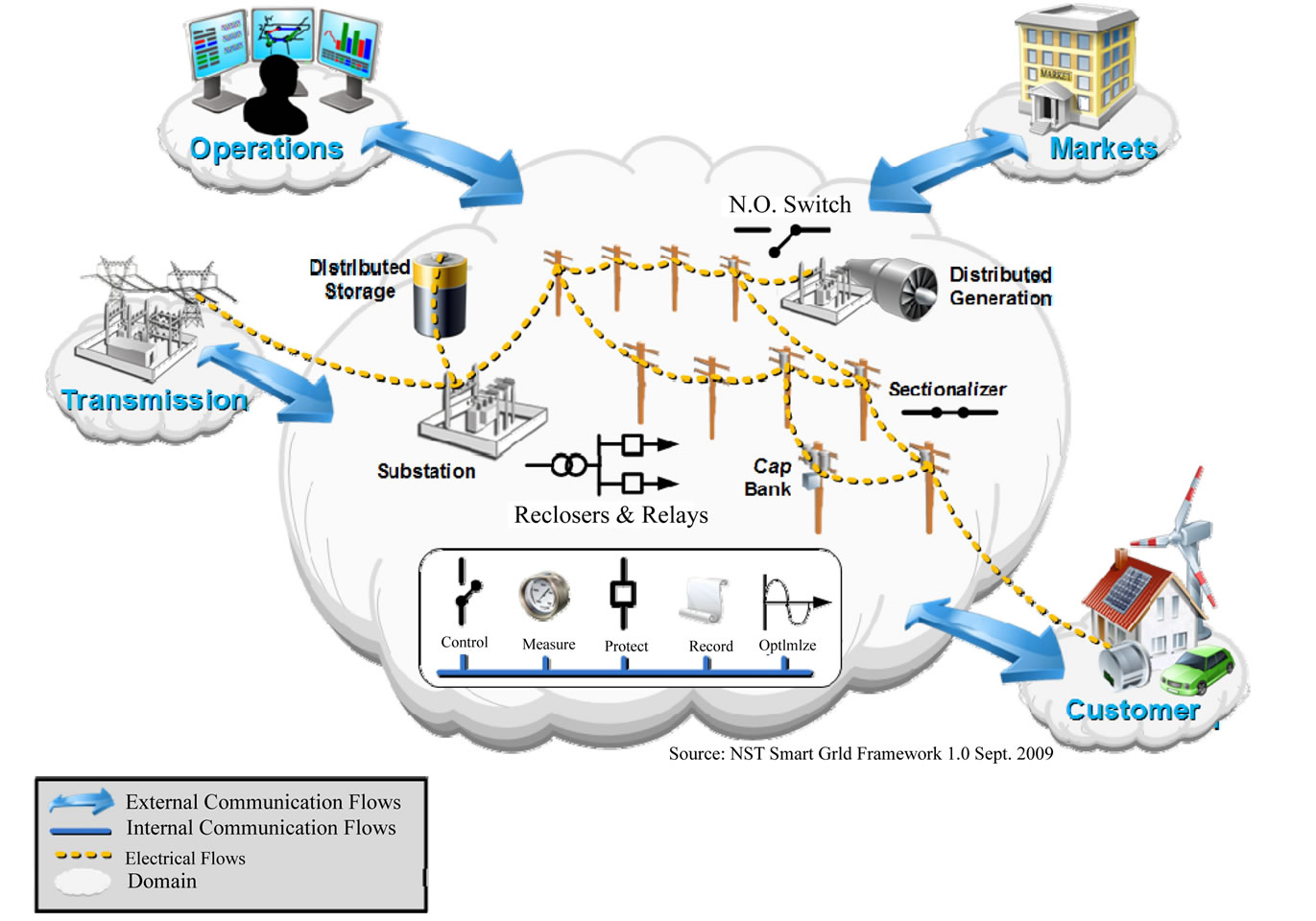
Figure 11. Distributed Networks [22].
demand continues to rise. New applications must be integrated with Advanced Distribution Management Systems (ADMS) and Distributed Power Flow Restoration (DPFR) to accomplish real time communications [27]. However, ADMS and DPFR require communication protocols between distributed networks, operations and market domains to exchange data for meter billing and energy trading. This means standards such as Distributed Network Protocols (DNP) will need to be replaced by protocols like IEC61850 seeing as the former does not support most smart grid applications.
5.2.4. Customer
Electricity customers typically are divided into commercial, industrial and residential areas. These areas consume electricity in different ways and essentially contribute to energy efficiency. Figure 12 presents the core functionalities of smart customers where utilities are linked to Energy Service Infrastructures (ESI). As the primary bridge between end-users and Energy Management Systems (EMS), ESI provides a secure WEB portal for customers to monitor and control distributed generation, billing and on-line energy usage. This framework requires several major elements of EMS including [28]:
• Smart appliances and control panels;
• Smart meters;
• Advanced Metering Infrastructures (AMI);
• Meter Data Hubs;
• OLTP for power companies;
• Interface between Meter Data Hubs and OLTP;
• Interface between SCADA and OLTP;
• Interface between OLTP and AMI.
However, from a customer’s point of view this real time Energy Management System enables end-users to receive precedented information about their electricity consumption and history, allowing them to make intelligent decisions on how to manage their electricity. The framework can only be implemented if a flexible, open and secure infrastructure is available. Zig-Bee caters for these requirements and supports the IEEE 802.15.4 standard [29]. Figure 13, demonstrates the Energy Management System.
5.2.5. Operations
Figure 14, illustrates the operations domain associated with the overall grid management. It employs the use of Energy Management Systems to ensure the network remains reliable and efficient at all times. The operations domain employs the IEC61968-1 Interface Reference Model (IRM) for applications such as [22]:
• Network Operation Monitoring;
• Local or Wide Area Control and Fault Management;
• Reporting and Statistics;
• Calculating and Analysis;
• Records and Assets Management;
• Maintenance, construction and operational planning.
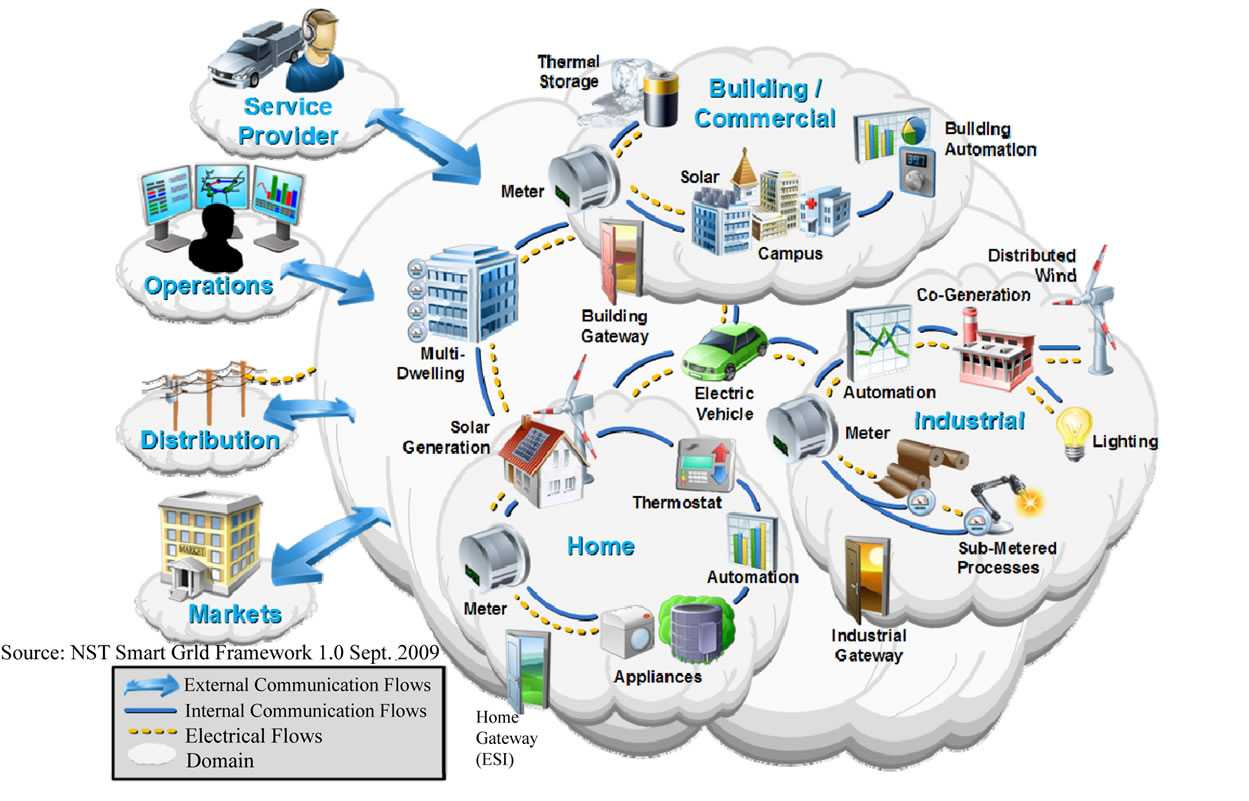
Figure 12. Customers Domain [22].
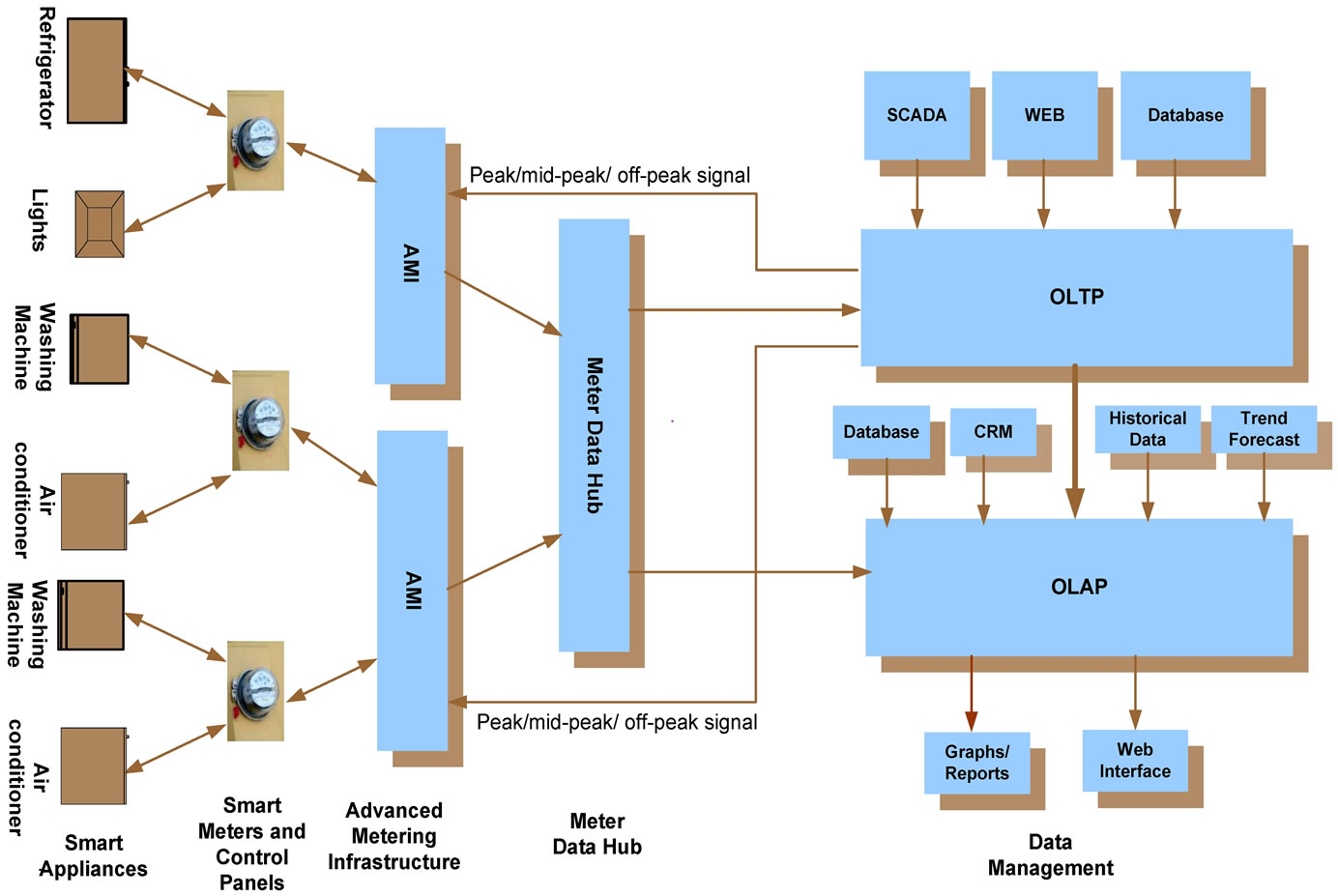
Figure 13. Real Time Energy Management System [28].

Figure 14. Operations Domain [22].
5.2.6. Markets
Electricity cost is expected to double in the next 5-10 years due to competitive energy markets increased power demand and government regulations. However, with smart grid technologies present day costs can be minimized. Figure 15, illustrates the market domain responsible for managing all aspects of electricity markets such as simplification of market rules, managing the regulation and growth of trading, retailing, wholesaling and evolving electricity prices by way of consumer domains [22]. This allows for load shedding management that ultimately ensures power security of supply despite large fluctuation on the end-user.
5.2.7. Service Provider
Figure 16, depicts the service provider domain comprising of three distinct domains - operations, customers and markets domains. These domains are linked to each other with extremely secure interfaces to maintain cyber security, reliability, stability and integrity when delivering
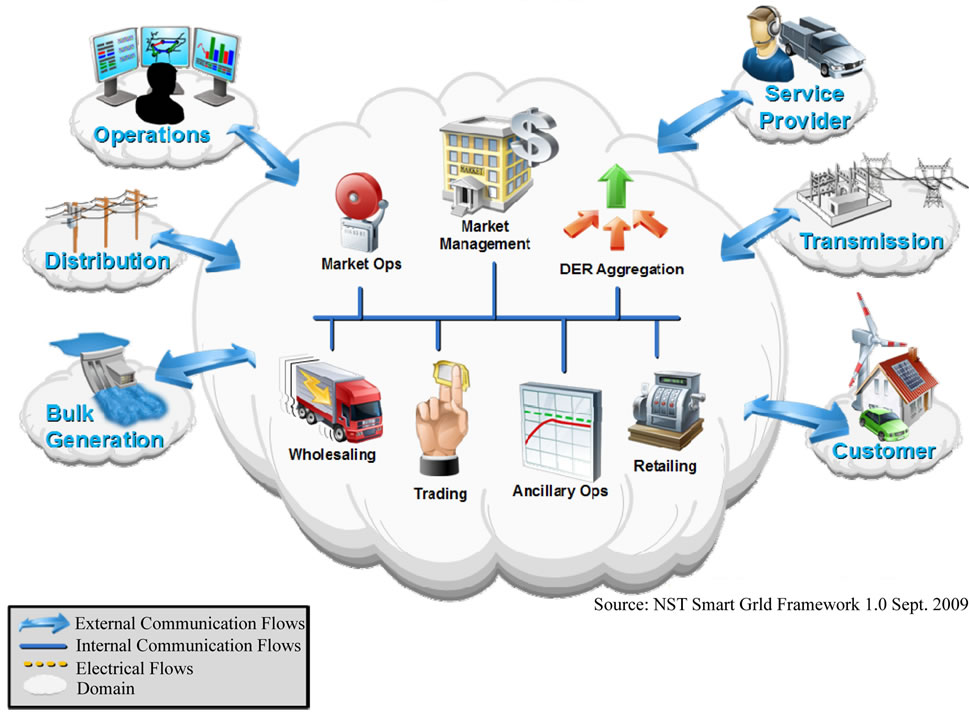
Figure 15. Markets Domain [22].
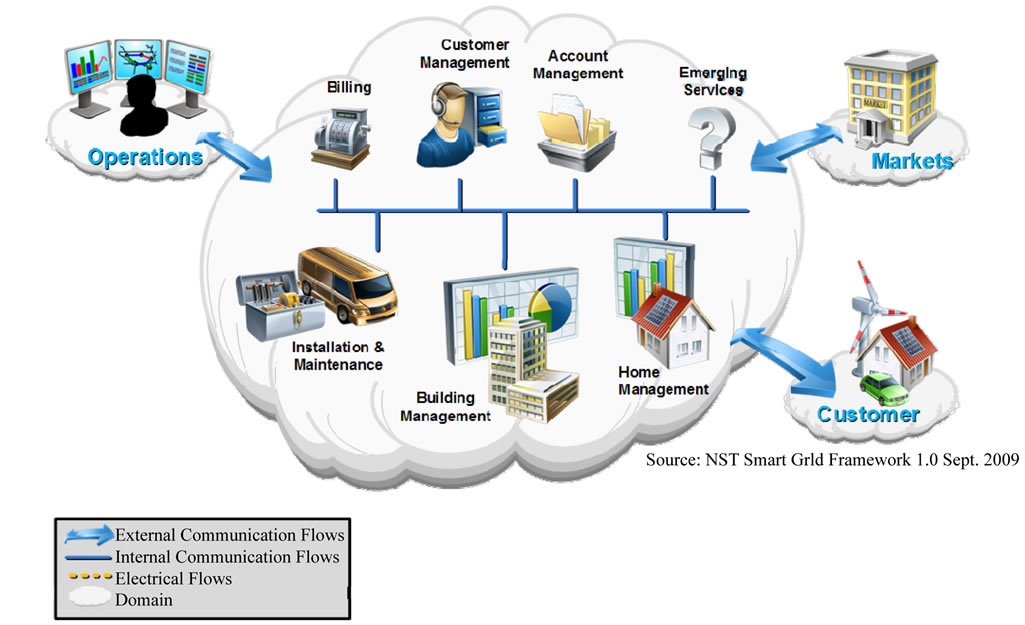
Figure 16. Service Provider Domain [22].
services. Typical applications of service providers including managing customer installation and accounts [22]. Service providers are expected to be more innovative to end-users by offering new service offers (i.e. prepaid electricity). This model allows customer to control their energy consumption more efficient according to their pre-paid balance once inserting a digital code to their Pre-paid Advanced Metering infrastructure which converts the amount of electricity into kWh. In case of smart grid, pre-paid electricity enables the customer insight into their daily energy usage.
6. Smart Grid Barriers
Smart grid frameworks offer great promise for enhancing environmental compliance. However, the transition from centralized power system networks to decentralized power system networks will create major barriers when implementing smart grid technologies. Consequently, profound analysis and R&D efforts must be carried out to overcome vulnerabilities [16]. Three barriers that must be considered include technical, regulatory and economical.
6.1. Technical Barriers
Technical barriers deal with integration issues related to automation, measurement utilities, sensors, advanced power electronic devices and standard operations. Most device installations are incompatible therefore resulting in technical barriers. Interoperability is the ability to share information that has been exchanged between two or more systems [30]. These systems may consist of Power Quality Monitoring (PQM), Wide Area Measurement Systems (WAMS), SCADA and various intelligent controls.
6.2. Regulatory Barriers
On account of the lack of international standards, interoperability methods of different products are distinct in different localities. For example, many states regulate their standards, rates and policies based on local regulations. These conditions can slow down smart grid development and even increase the cost of integration. However upgrading power system networks with smart grid technologies will allow the consumer, service provider and operator to share benefits collectively. This advantage is difficult to measure from a financial point of view, guaranteeing regulators address the operational standards based on wholesale market liberalization.
6.3. Economical Barriers
Smart grid technologies offer various benefits for utilities and consumers to manage their energy consumption. Smart grids provide flexibility for new integration of distributed generation. However, the implementation of smart grid technologies requires significant investment to upgrade the existing power system infrastructure as many devices are still expensive. Furthermore, smart grid applications moreover allow selling of small amounts of energy in liberalized market.
7. Conclusions
The authors of this paper evaluated some of the key debatable issues influencing the Electricity Sector both at present and in the foreseeable future. Following such assessment research on distributed generation systems and smart grid technologies was emphasized concentrating on previous R&D efforts across US and Europe. In addition, the paper provided a comprehensive analysis into seven smart grid frameworks that need to be addressed to make the future electricity grid smarter. These include bulk generation, transmission, distribution, customer, operation, markets and service providers. Finally, a brief impression on smart grid barriers including technical, regulatory and economical was discussed. Positive and negative impacts were also mentioned including improving system reliability, preventing under voltage drop, influencing transient stability and harmonic distortion during connection or disconnection of these technologies.
Distributed Generation Systems, Smart Grid Technologies and Future Motivators Influencing Change in the Electricity Sector are currently an important issue. Therefore, since it has become a leading concern in the field of power system in particular with the development in the industrial nations worldwide, this paper will greatly valuable for further understanding in these subjects.
8. Acknowledgements
The first author would like to acknowledge the Australian Development Scholarship (ADS) for providing the support essential to pursue his Master by Research at Victoria University, Melbourne, Australia.
REFERENCES
- B. Stojcevski and A. Kalam, “Fault Location in Overhead Power Lines Using the IEC61850 International Protocol,” International Review on Modelling and Simulation, vol. 3, No. 5, 2010, pp. 888-899.
- R. Garnaut, “The Garnaut Climate Change Review,” Cambridge University Press, Port Melbourne, 2008.
- H. L. Willis and W. G. Scott, “Distributed Power Generation—Planning and Evalutation,” Marcel Dekker, New York, 2000.
- R. Whitaker, “Understanding Climate Change—The Story of the Century”, New Holland Publishers, Sydney, 2007.
- A. Jolly, “Managing Climate Risk—A practical,” Thorogood, London, 2008.
- A. S. Massoud, “Electricity infrastructure security: Toward reliable, resilient and secure cyber-physical power and energy systems,” Power and Energy Society General Meeting, 2010 IEEE, Minneapolis, 30 September 2010.
- V. P. Mahadanaarachchi, R. Ramakuma, “Impact of distributed generation on distance protection performance—A review,” Power and Energy Society General Meeting—Conversion and Delivery of Electrical Energy in the 21st Century, 2008 IEEE, Pittsburgh, 20-24 July 2008, pp.1-7.
- N. Hatziargyriou, “Modeling New Forms of Generation and Storage,” CIGRE Technical brochure, TF 38.01.10, November 2000.
- W. El-khattam and M. M. A. Salama, “Distributed Generation Technologies, definitions and benefits,” Electric Power Systems Research, Vol. 71, 2004, pp. 119-12. doi:10.1016/j.epsr.2004.01.006
- J. A. Lopes, “Integration of Dispersed Generation on Distribution Networks-Impact Studies,” IEEE, Vol. 1, 2002, pp. 323-328.
- R. A. Prata, “Impact of Distributed Generation Connection with Distribution Grids—Two Case-Studies,” IEEE Power Engineering Society General Meeting, Pittsburg, 2006, p. 8.
- A. Mahmood, M. Aamir and M. I. Anis, “Design and Implementation of AMR Smart Grid System,” IEEE Electric Power and Energy Conference, Canada, 2008, pp. 1-6.
- C. Chai, L. Wei-Jen, P. Fuangfoo, M. Williams and J. R. Liao, “System Impact Study for the Interconnection of Wind Generation and Utility System,” IEEE Transactions on Industry Applications, vol. 41, no. 1, 2005, pp. 163- 168. doi:10.1109/TIA.2004.841032
- J. R. Roncero, “Integration is Key to Smart Grid Management,” Smart Grids for Distribution, 2008. IET-CIRED. CIRED Seminar, Frankfurt, 23-24 June 2008, pp. 1-4.
- T. J. Lui, W. Stirling and H. O. Marcy, “Get Smart,” Power and Energy Magazine, IEEE, vol. 8, no. 3, MayJune 2010, pp. 66-78. doi:10.1109/MPE.2010.936353
- C. W. Gellings, M. Samotyj and B. Howe, “The Future’s Smart Delivery System [Electric Power Supply],” Power and Energy Magazine, IEEE, vol. 2, no. 5, SeptemberOctober 2004, pp. 40-48.
- “Grid 2030—A National Vision for Electricity’s Second 100 Years,” U.S Department of Energy, Office of Electric Transmission and Distribution, July 2003 Available from HUhttp://www.oe.energy.gov/DocumentsandMedia/Electric_Vision_Document.pdf
- National Institute of Standart and Technology, “NIST and the Smart Grid,” 2010. http://www.nist.gov/smartgrid/nistandsmartgrid.cfm
- Electric Power Research Institute, “Intelligrid,” 2010. http://intelligrid.epri.com
- European Commission, Directorate General for Research, Directorate Energy, “Strategic Research Agenda for Europe’s Electricity Networks of the Future,” European Technology Platform Smart Grid, 2007.
- European Commission, “European Smart Grid Technology Platform—Vision and Strategy for European Electricity Networks of the future,” 2010. http://www.smartgrids.eu/web/node/28/default.asp
- Office of the National Coordinator for Smart Grid Interoperability, National Institute of Standart and Technology, U.S. Department of Commerce, “NIST Framework and Roadmap for Smart Grid Interoperability Standard, Realease 1.0,” NIST Special Publication 1108 on the January 2010.
- J. de La Ree, V. Centeno, J. S. Thorp and A. G. Phadke, “Syncrhonized Phasor Measurement Applications in Power Systems,” IEEE Trans. On Smart Grid. vol. 1, no. 1, June 2010, pp. 20-27. doi:10.1109/TSG.2010.2044815
- Schewizer Engineering Laboratories, “Effectively Integrate More Photovoltaic (PV) Generation Sources into the Grid,” 2010. https://tesla.selinc.com/emailmarketer/display.php?M=12626&C=7114023c0fe9099bf0e911a246630d60&S=250&L=7&N=216U
- N. A. Hidayatullah, Z. J. Paracha and A. Kalam, “Impacts of Distributed Generation on Smart Grid,” International Conference of Electrical Energy and Industrial Electronic System (EEIES), Malaysia, 7-8 December 2009.
- R. Griinbaum, M. Halonen and G. Stromberg, “SVC for 69 kV Direct Grid Connection,” Transmission and Distribution Conference and Exposition, 2008. T&D. IEEE/ PES, Chicago, 21-24 April 2008, pp. 1-7. doi:10.1109/TDC.2008.4517218
- J. Fan and S. Borlase, “The Evolution of Distribution,” IEEE Power & Energy Magazine, vol. 7, no. 2, MarchApril 2009, pp. 63-68. doi:10.1109/MPE.2008.931392
- D. Y. R. Nagesh, J. V. V. Krishna and S. S. Tulasiram, “A Real-Time Architecture for Smart Energy Management,” Innovative Smart Grid Technologies (ISGT), Gaithersburg, 19-21 January 2010, pp.1-4. doi:10.1109/TDC.2008.4517218
- J.-S. Lee and Y.-C. Huang, “ITRI ZBnode: A ZigBee/IEEE 802.15.4 Platform for Wireless Sensor Networks,” Systems, Man and Cybernetics, 2006. SMC '06. IEEE International Conference on, Taipei, 8-11 October 2006, pp. 1462-1467.
- The GridWise® Architecture Council, “GridWise® Interoperability Context-Setting Framework,” 2010. http://www.gridwiseac.org/pdfs/interopframework_v1_1.pdf

